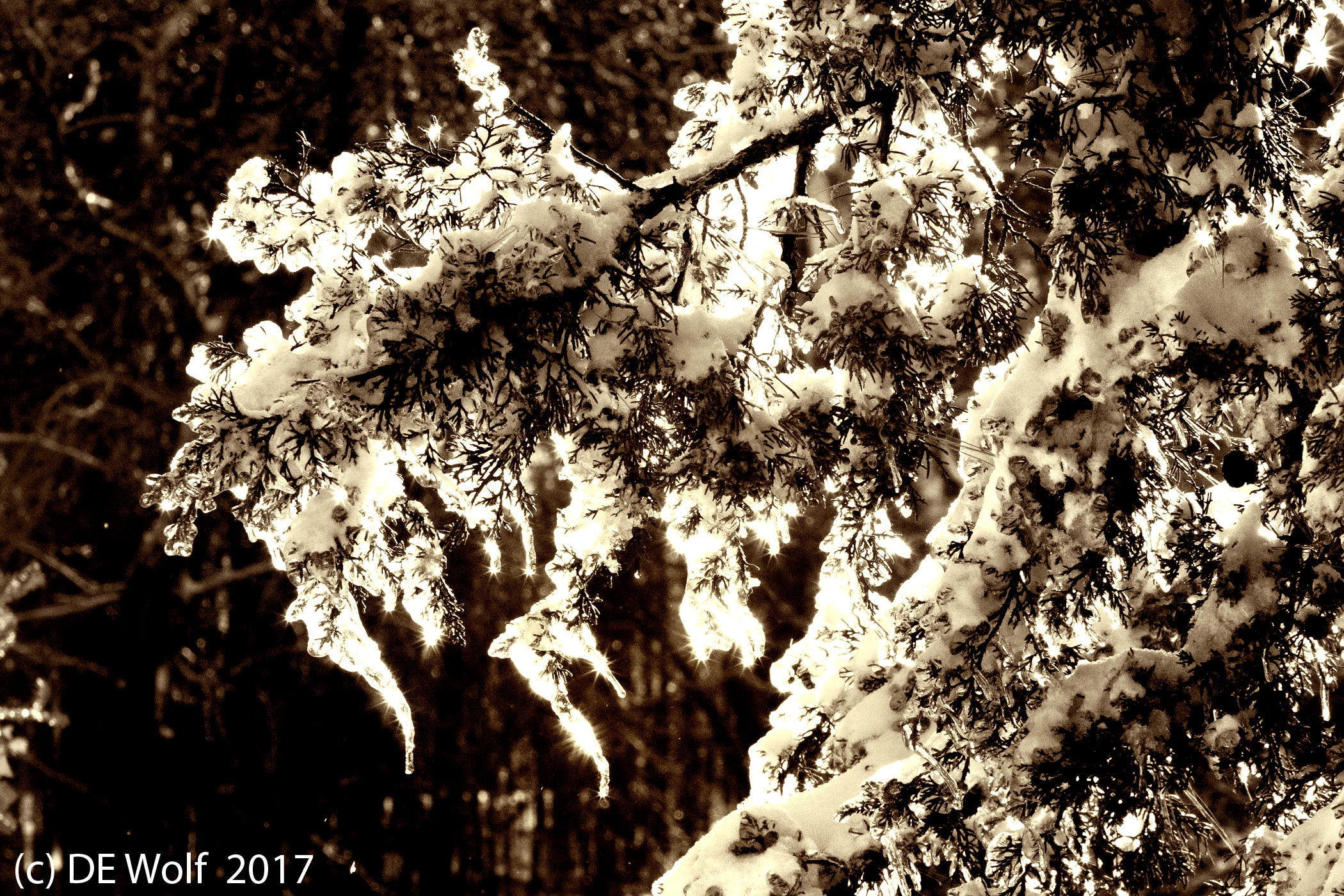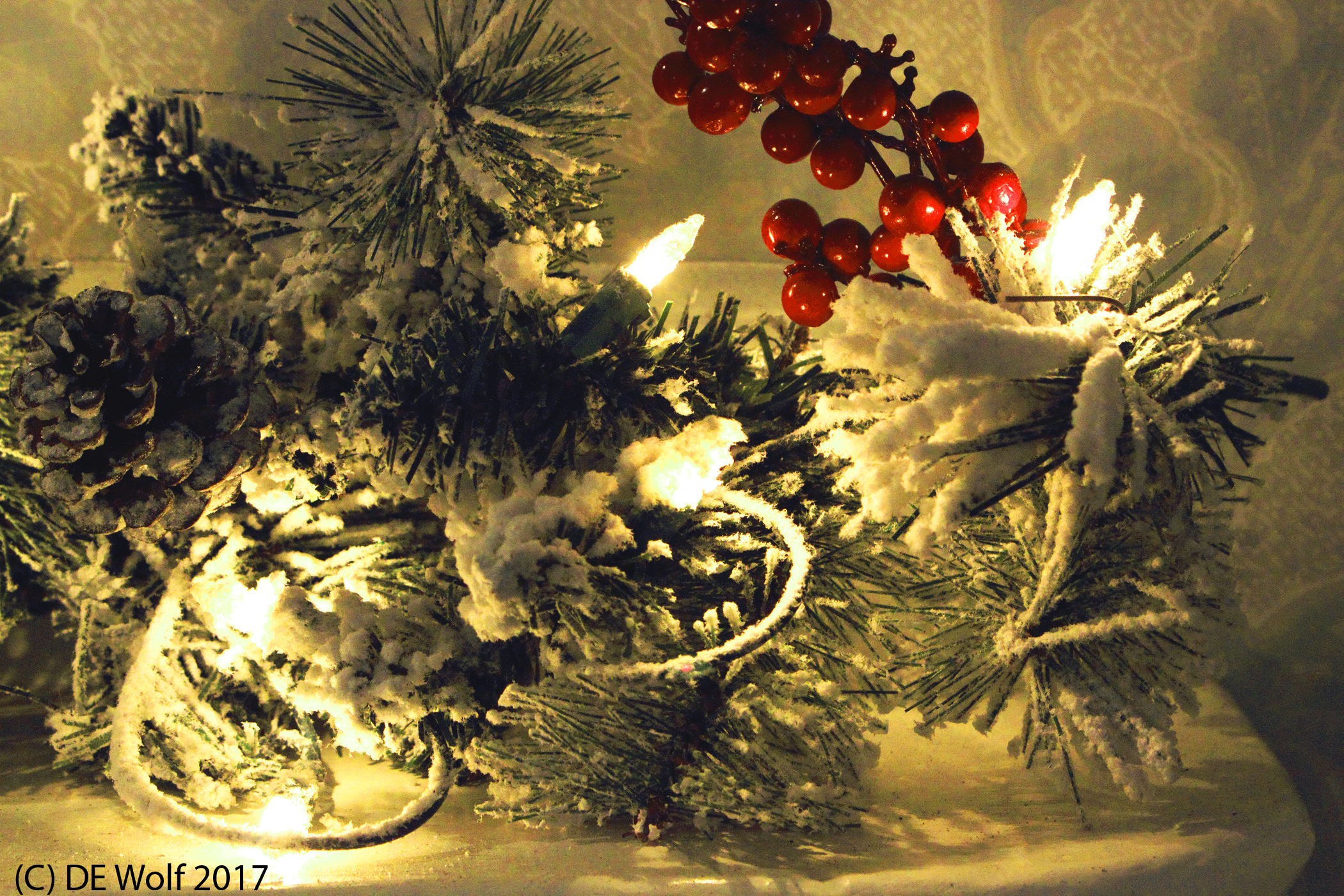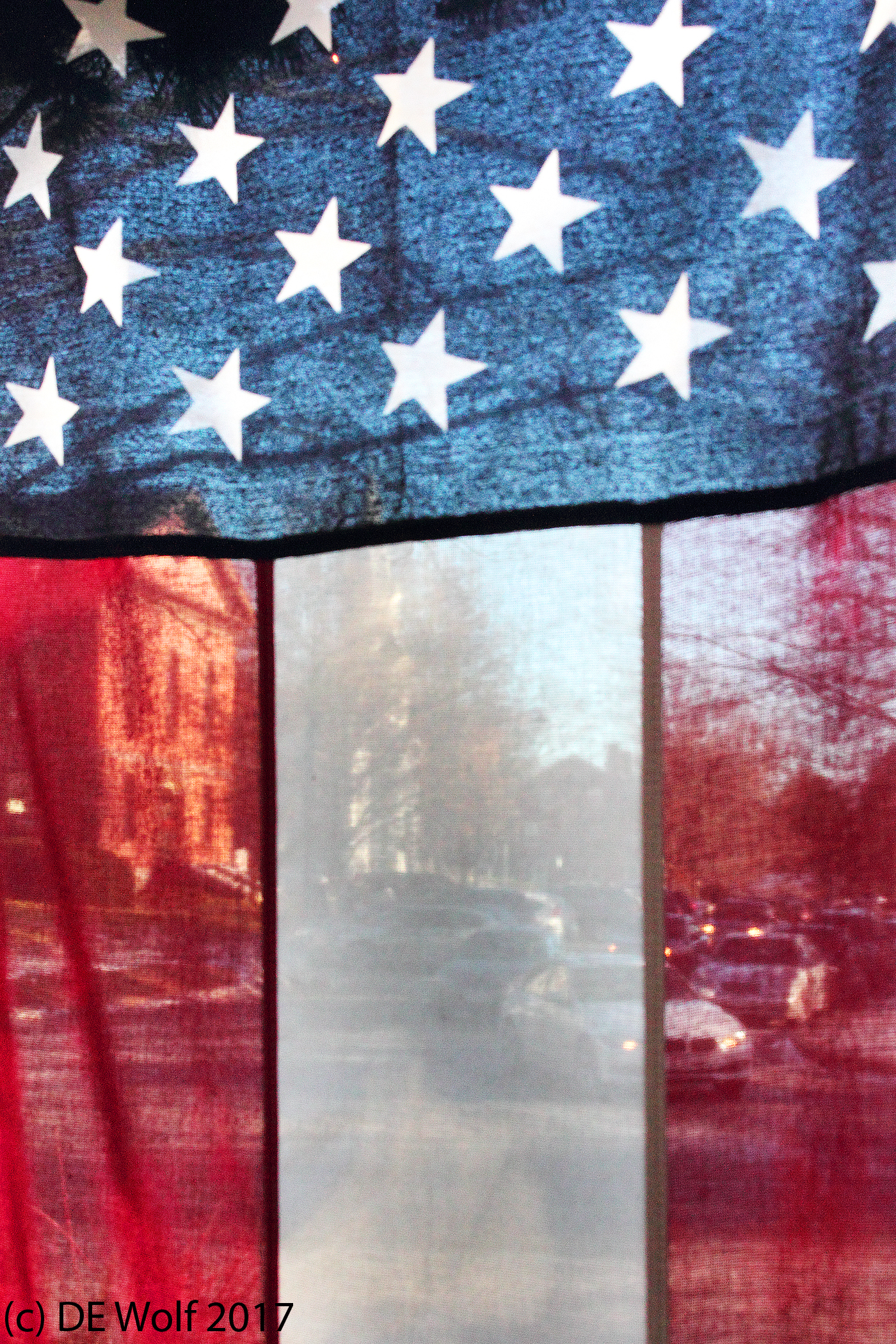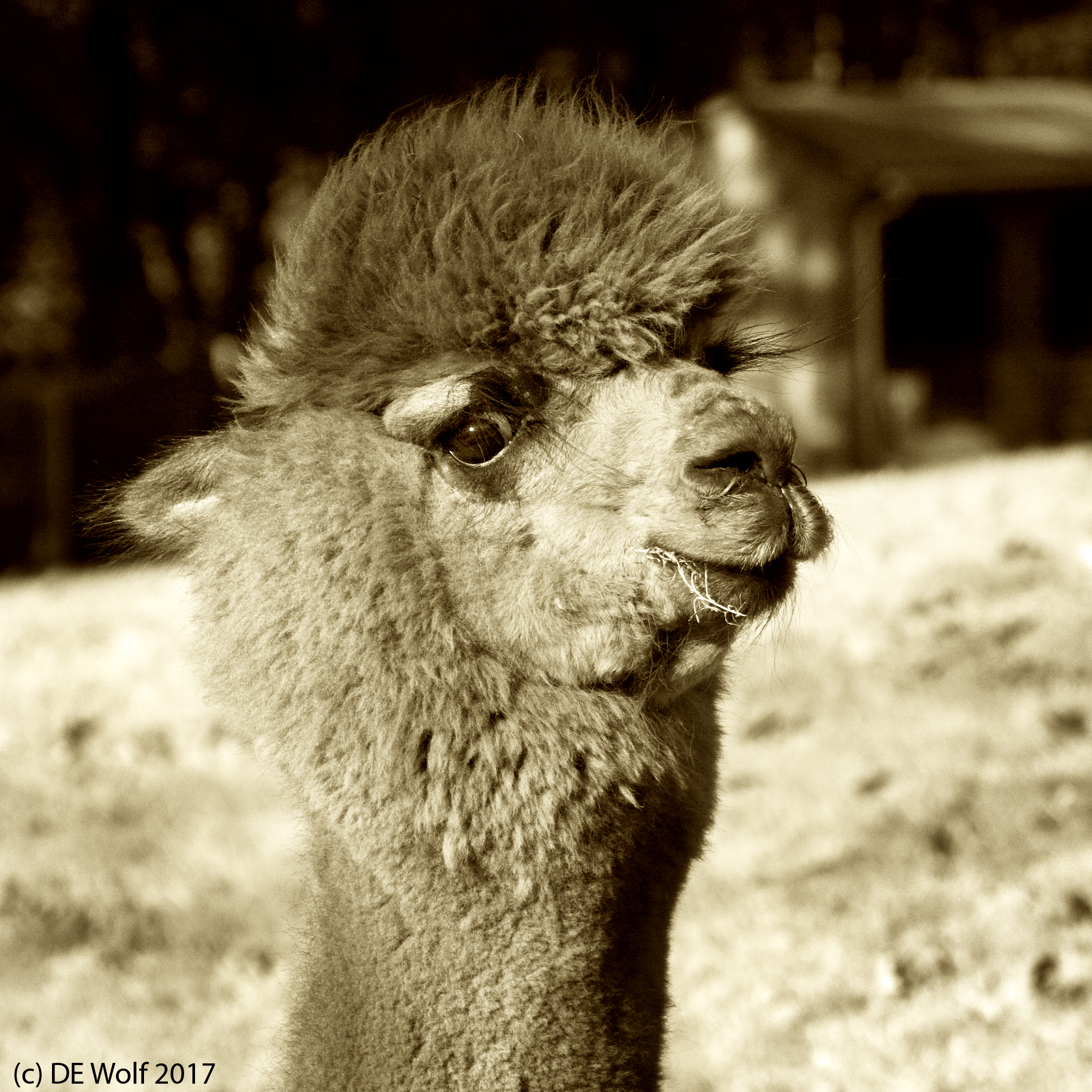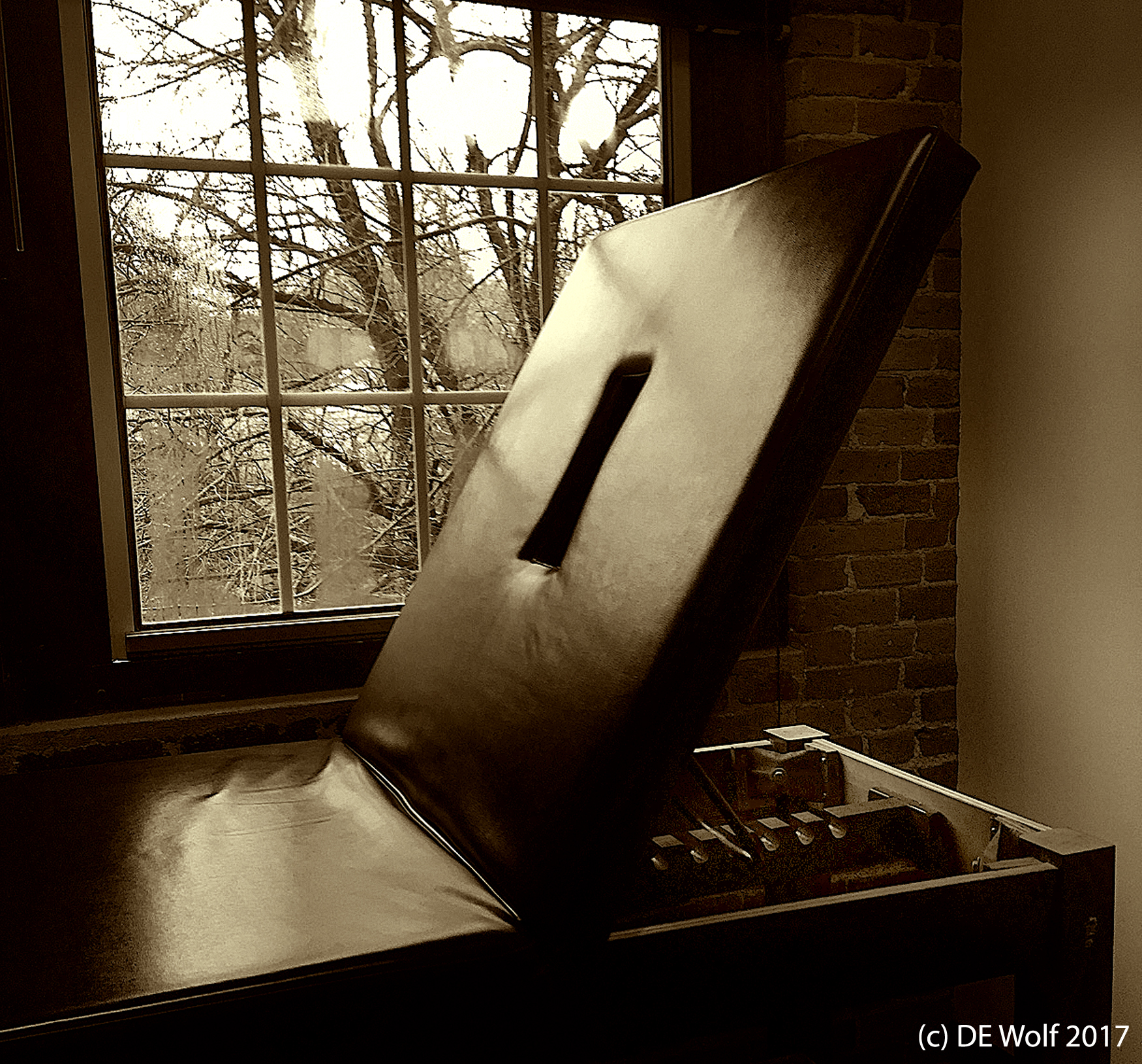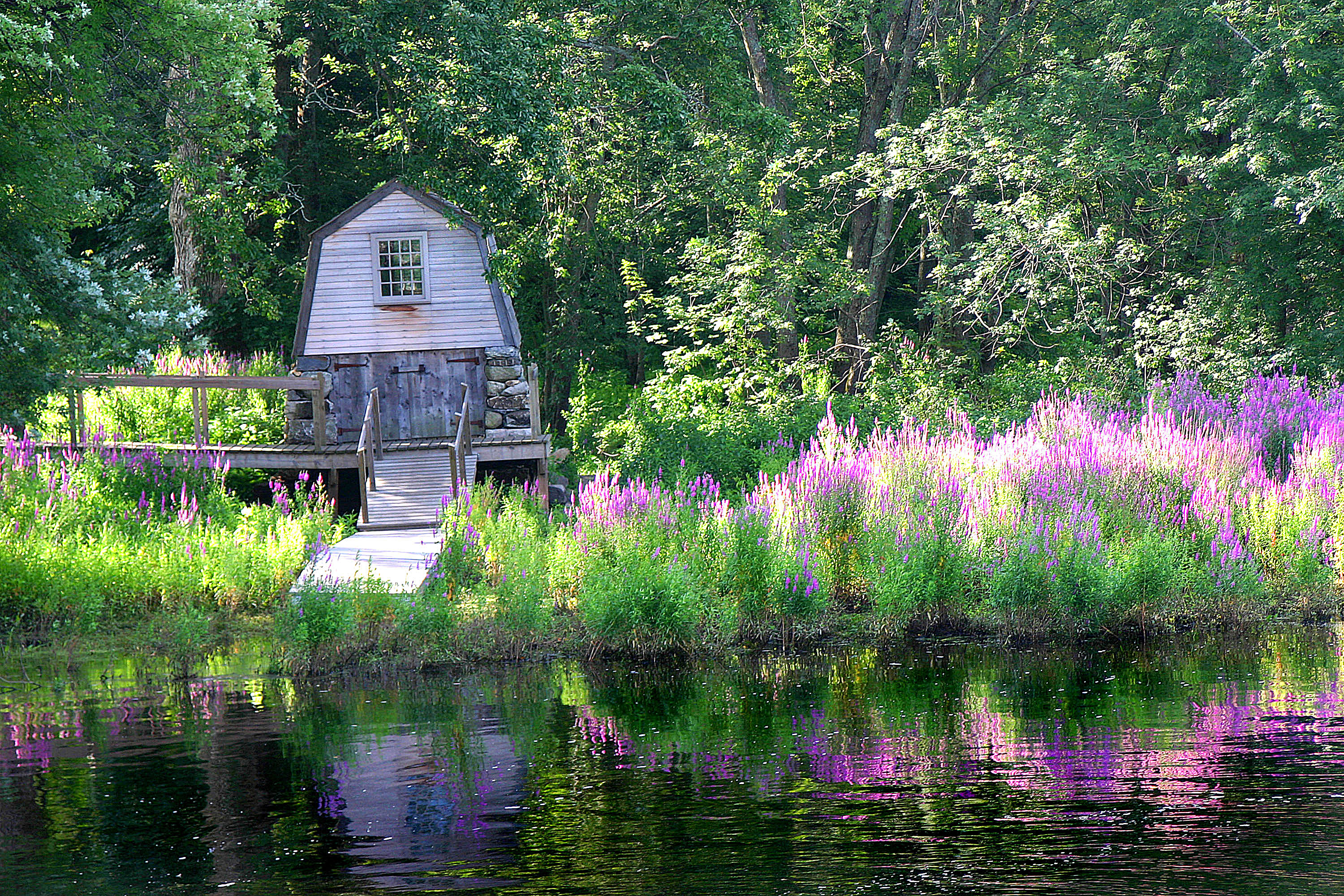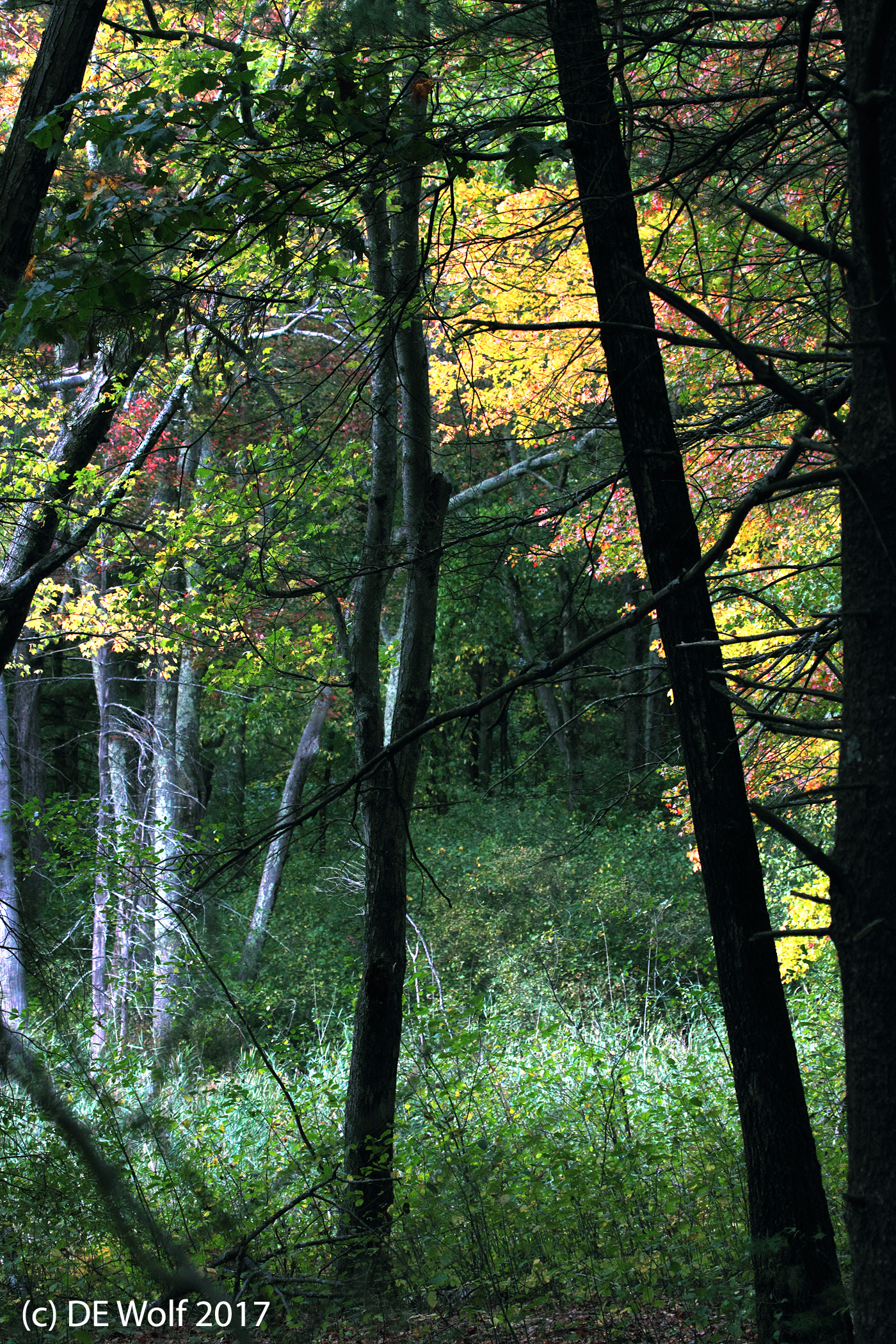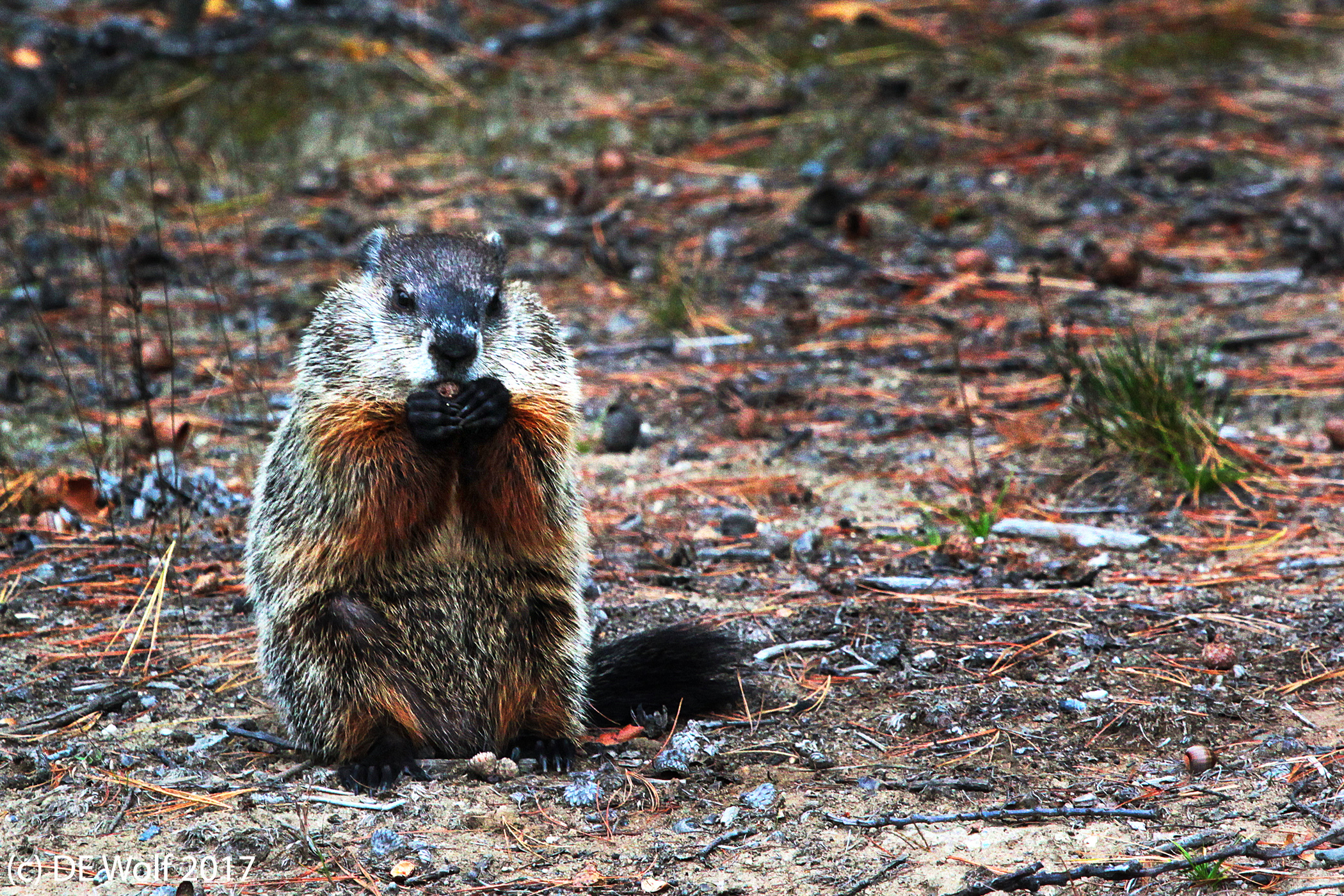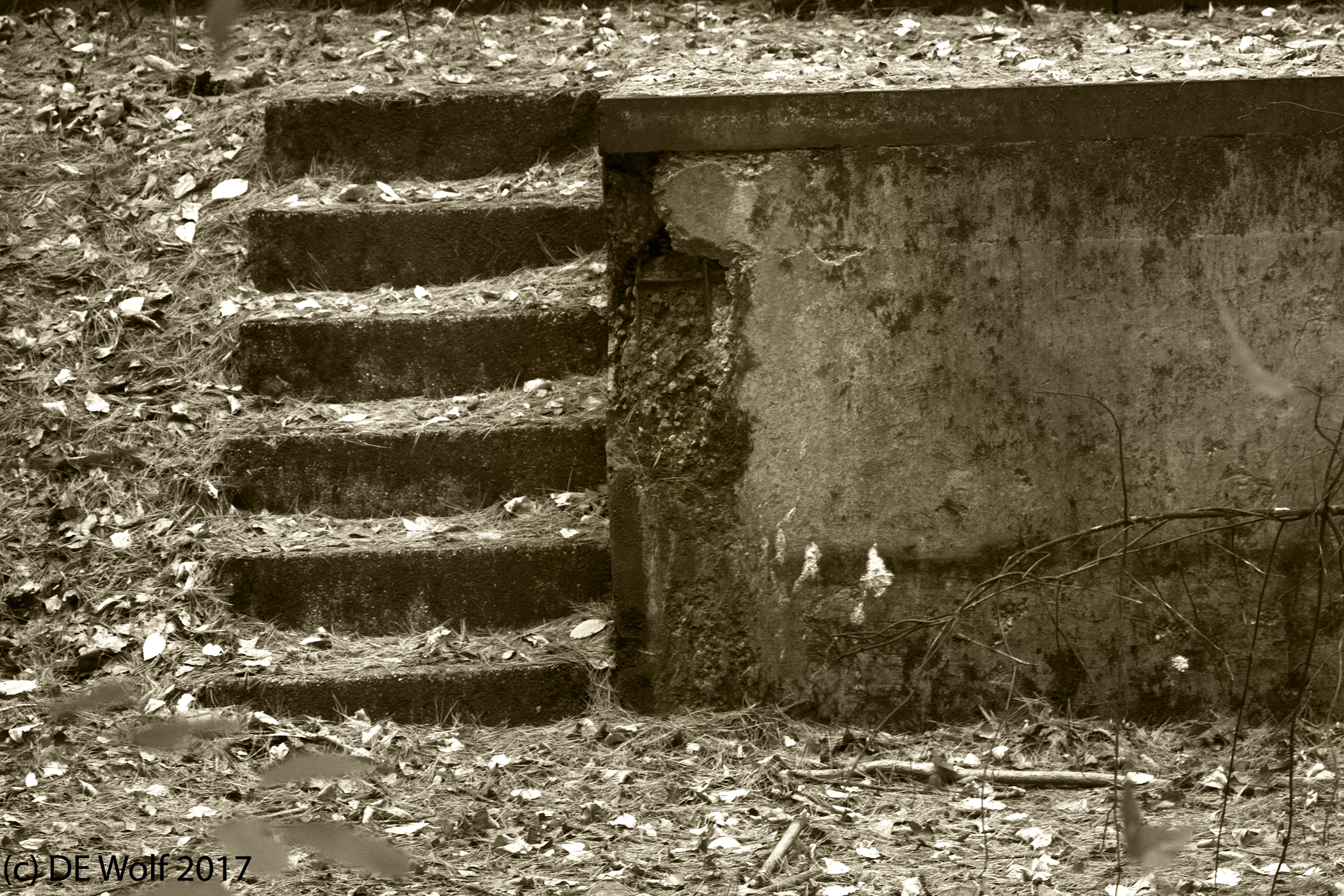
Figure 1 – A dark moment with Cthulhu, Stow, MA. (c) DE Wolf 2017.
I want to thank all of you who made it to the opening of my show “The Laser Pen of Nature” last week at Beyond Benign. The show will last until January 31; so “come on down.”
I have spoken before, perhaps too much, about how when you walk the Assabet River Natural Wildlife Refuge there is always the sense of the Cthulhu mythos in the woods. More specifically, I start the little hike through the marshlands, which are rough and gorgeous, looking for birds to photograph, and then when you descend from the marsh on what is referred to as “Otter Way,” there is a great squawking of blue jays just before you enter the pine barren. It is as if they are warning you to beware. At that point my search changes, I am now looking for oddly-shaped trees and finally the World War II ammunition bunkers that were built into artificial berms, now covered, seventy plus years later, with trees and vegetation. These bring you into the mood of Lovecraft’s Cthulhu and Stephen King’s “It.”
It is easy to image that there is something not quite right. That these sealed bunkers with with very impressive and prominent locks hold something not so wholesome – and perhaps of another world.
“Ph’nglui mglw’nafh Cthulhu R’lyeh wgah’nagl fhtagn.
In his house at R’lyeh dead Cthulhu waits dreaming.”
“That is not dead which can eternal lie.
And with strange aeons even death may die.”
It is an ongoing theme in Lovecraft’s and subsequent “followers'” work that humanity is wholly irrelevant in the face of the cosmic horrors that exist in the universe. Central to the theme of this fictional mythology is Lovecraft’s frequent references to the race of the “Great Old Ones,” a pantheon of ancient, powerful deities who traveled through the four dimensions of space-time to Earth, where they once ruled and have since fallen into a deathlike sleep. But if mankind itself becomes too evil these creatures, chief among them Cthulhu, may rise again to wreak unknown and unspeakable horrors.
It is an intriguing question just what it means to travel through the four dimensions. We all travel through the four dimensions of what is referred to as a Minkowski Space along our personal world line. But we are subject to two limitations: first, time is an arrow, we always move forward in time; and second, we can never travel faster than the speed of light. Physicists have recently conjectured about geographical four dimensional structures like worm holes that would allow passage between any two points in the Minkowski space. It sounds, and is, of course very much science fiction; but it is kept alive by the basic indifference of the equations of physics to time reversal – that is they can run both forward and backwards.
So when you come upon a strange, dark spot in the woods, you can become just a bit unnerved and uneasy. What is inside of those bunkers? In Figure 1, I have photographed such a moment and place – remember the four dimensionality of space and time. It was a very dark and dull moment. The forest floor was made silent by the annual fall of dried pine needles from the canopy. Here is a little geometric structure – the pine needle covered steps that lead to the great sealed iron door, and masses of concrete keep us out, or perhaps, “it” in.
Canon T2i with EF100-400mm f/4.5-5.6L IS USM lens at 100 mm, ISO 800, Aperture Priority AE Mode, 1/50th sec at f/6.3 with -2 exposure compensation.

